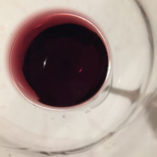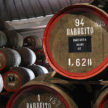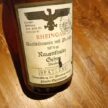In the 19th century the red wine of the Veronese shore of Lake Garda started to be referred to as Bardolino. Three sub-zones were identified around the year 1825: the foothills of Montebaldo (district of Caprino), the upper morainic region (district of Bardolino) and the lower morainic hills (district north of Villafranca). They were carefully portrayed by the scholar Giovan Battista Perez at the end of the century. At that time, the best wines from the area were exported to Switzerland to be served along with wines from Bourgogne and Beaujolais.
Unfortunately, these three historic macro-zones of the Bardolino wine region were not mentioned in the Doc regulations of 1968. The Bardolino wine Consortium decided to reintroduce them with the amendment adopted in 2018, calling them Montebaldo, La Rocca and Sommacampagna. The wines must be labelled as Montebaldo Bardolino, La Rocca Bardolino and Sommacampagna Bardolino. The name of the cru must always come before the name of the appellation.
The Montebaldo subzone includes those parts of the municipal territories of Affi, Caprino Veronese Cavaion Veronese, Costermano sul Garda and Rivoli Veronese that lie within the Bardolino DOC zone. It is the most inland part of the Bardolino region, towards the north of the zone, at the foot of Mount Baldo, and is characterized by higher average altitudes and the presence of peaks such as Mount Moscal and the Rocca di Rivoli. It includes the fluvio-glacial plain that separates the two morainic apparatuses of Lake Garda and of the Adige. It has more marked thermal excursions and higher rainfall.
The La Rocca subzone includes those portions of the municipal territories of Bardolino, Castelnuovo del Garda, Garda, Lazise, Peschiera del Garda and Torri del Benaco that are part of the Bardolino zone. It lies on the shores of Lake Garda and its immediate hinterland, on the finer soils of the morainic hills near the lake and on the moderately recent ones further inland. It is characterized, in its northern part, by the presence of the hill of La Rocca and by Mount Luppia. According to the classification described by Perez in 1900 it corresponds substantially to what was known as the “Plaga Gardense”.
The Sommacampagna subzone includes the parts of the municipal territories of Bussolengo, Pastrengo, Sommacampagna, Sona and Valeggio sul Mincio that lie within the Bardolino production zone. It represents the south-eastern part of the D.O.C area, which substantially corresponds to what Perez described in 1900 as the “southern morainic hills”, which included the towns and villages “touching the high plain”, within the perimeter of the ancient district north of Villafranca.
Following the request of the Consortium, the Italian Government officially approved the three crus on April 14th, 2020. Reaching this goal took a long time. The first zoning attempts were carried out in 2005 and have subsequently been developed through the 2015 Bardolino Village project. Nothing was left to chance.
Each cru has a distinct identity: raspberry and cinnamon are the main characters of the wines from La Rocca, strawberry and clove are more evident in the wines of Montebaldo, cherries and black pepper are mainly present in the wines of Sommacampagna. Different flavors, same identity. In order to strengthen these different identities, the maximum yield allowed for the crus (10 tons per hectare – but usually around 9 tons) is lower than the yield allowed for the other wines of the appellation (12 tons). Moreover, wines labelled with the name of the crus must age at least one year before being released (but usually they are release after a longer ageing). The ancient Bardolino Crus are back!
![]()


